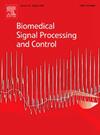一种具有变形注意力的作物病害分类双视觉变形框架
IF 4.9
2区 医学
Q1 ENGINEERING, BIOMEDICAL
引用次数: 0
摘要
近年来,由于作物缺乏免疫力和气候变化,作物病害大幅增加。这导致了农作物的毁坏和作物种植不善。快速准确的作物病害分类对提高农业产量和预防作物危害至关重要。本研究提出了一种新的Twin Vision Transformer框架,用于农作物病害的准确、快速分类。该模型利用深度可分离视觉几何组(16)技术提取融合了深度可分离卷积和通道归一化的裁剪图像特征。采用深度可分卷积计算信道和空间分离,降低了计算复杂度。通道规范化用于使用本地响应规范化每个激活。此外,Twin Vision Transformer模型集成了变压器编码器、边缘感知增强模块和分类器头,用于准确的疾病分类。变压器编码器层用于捕获复杂关系,其中包括可变形注意,用于识别图像补丁的相关部分并增强模型的灵活性,以及空间通道注意,用于增强关键特征通道和空间位置。此外,采用带swish门控线性单元的残差多层感知器,通过减少过拟合来增强模型的泛化能力。边缘感知增强模块的开发是为了改善识别边缘周围的特征。此外,在分类器头部采用挤压和激励块,以强调作物病害的特征,提高模型的分类精度。提出的Twin Vision Transformer模型的分类准确率达到了98.88%,实验分析证实了该模型比现有的作物病害分类方法更准确、可靠。本文章由计算机程序翻译,如有差异,请以英文原文为准。
A novel twin vision transformer framework for crop disease classification with deformable attention
In recent years, crop disease has grown substantially due to the lack of immunity in crops and climate changes. This results in crop destruction and poor crop cultivation. Quick and accurate classification of crop disease is crucial for enhancing agricultural yield and preventing crop damage. This research proposes a novel Twin Vision Transformer framework for accurate and quick classification of crop disease. The proposed model utilized a Depthwise Separable Visual Geometry Group (16) technique to extract the crop image features that incorporated Depthwise Separable Convolution and channel normalization. The Depthwise Separable Convolution is deployed for computing the channel and space separation and mitigating the computational complexity. The channel normalization is employed to normalize each activation using local responses. Further, the Twin Vision Transformer model integrates a transformer encoder, Edge Aware Enhancement Module, and classifier head for accurate disease classification. The transformer encoder layer is applied to capture the complex relationship that encompasses deformable attention for identifying the image patch’s relevant part and enhancing the flexibility of the model, and spatial-channel attention for enhancing the crucial feature channels and spatial locations. Moreover, the residual Multilayer Perceptron with Swish-Gated Linear Units is employed to enhance the generalization capability of the model by mitigating overfitting. The Edge Aware Enhancement Module is developed to improve the features around the identified edges. Additionally, the Squeeze and Excitation block in the classifier head is applied to emphasize the features of crop disease and to enhance the model’s classification accuracy. The proposed Twin Vision Transformer model provided a higher classification accuracy of 98.88 %, and the experimental analysis confirms that the proposed Twin Vision Transformer model is more accurate and reliable in classifying crop disease than existing crop disease classification approaches.
求助全文
通过发布文献求助,成功后即可免费获取论文全文。
去求助
来源期刊

Biomedical Signal Processing and Control
工程技术-工程:生物医学
CiteScore
9.80
自引率
13.70%
发文量
822
审稿时长
4 months
期刊介绍:
Biomedical Signal Processing and Control aims to provide a cross-disciplinary international forum for the interchange of information on research in the measurement and analysis of signals and images in clinical medicine and the biological sciences. Emphasis is placed on contributions dealing with the practical, applications-led research on the use of methods and devices in clinical diagnosis, patient monitoring and management.
Biomedical Signal Processing and Control reflects the main areas in which these methods are being used and developed at the interface of both engineering and clinical science. The scope of the journal is defined to include relevant review papers, technical notes, short communications and letters. Tutorial papers and special issues will also be published.
 求助内容:
求助内容: 应助结果提醒方式:
应助结果提醒方式:


